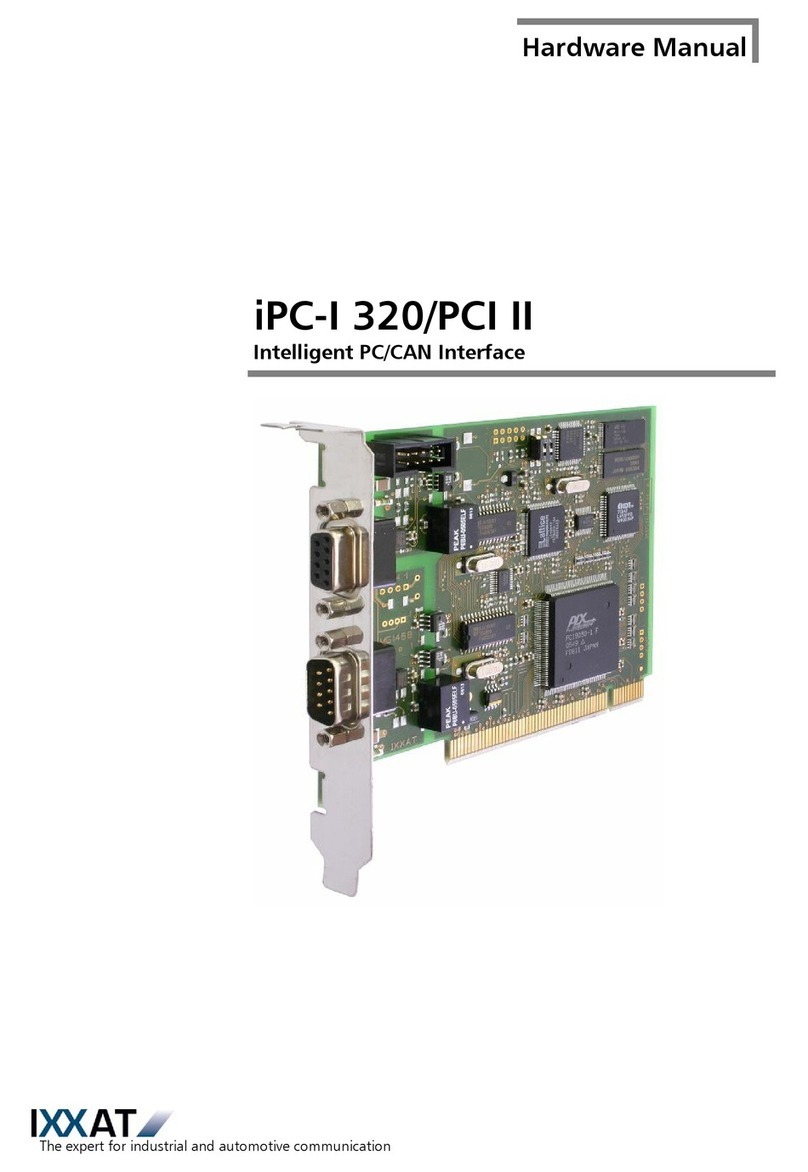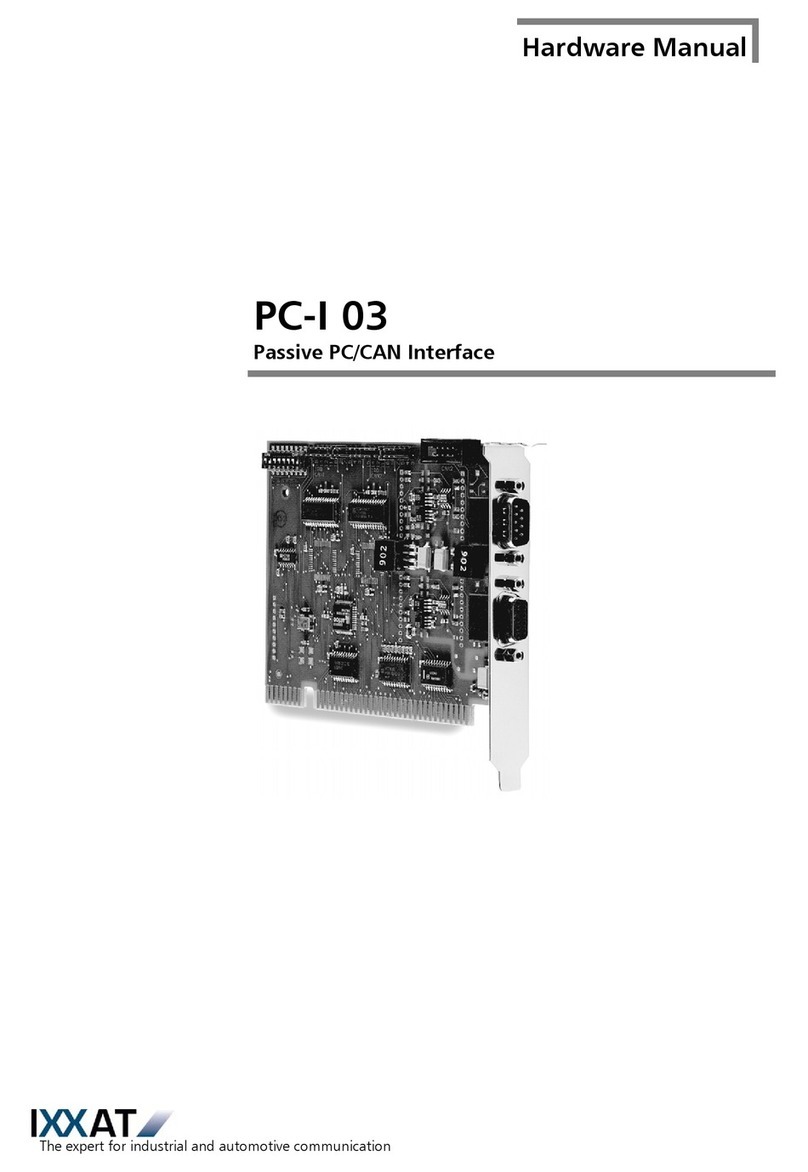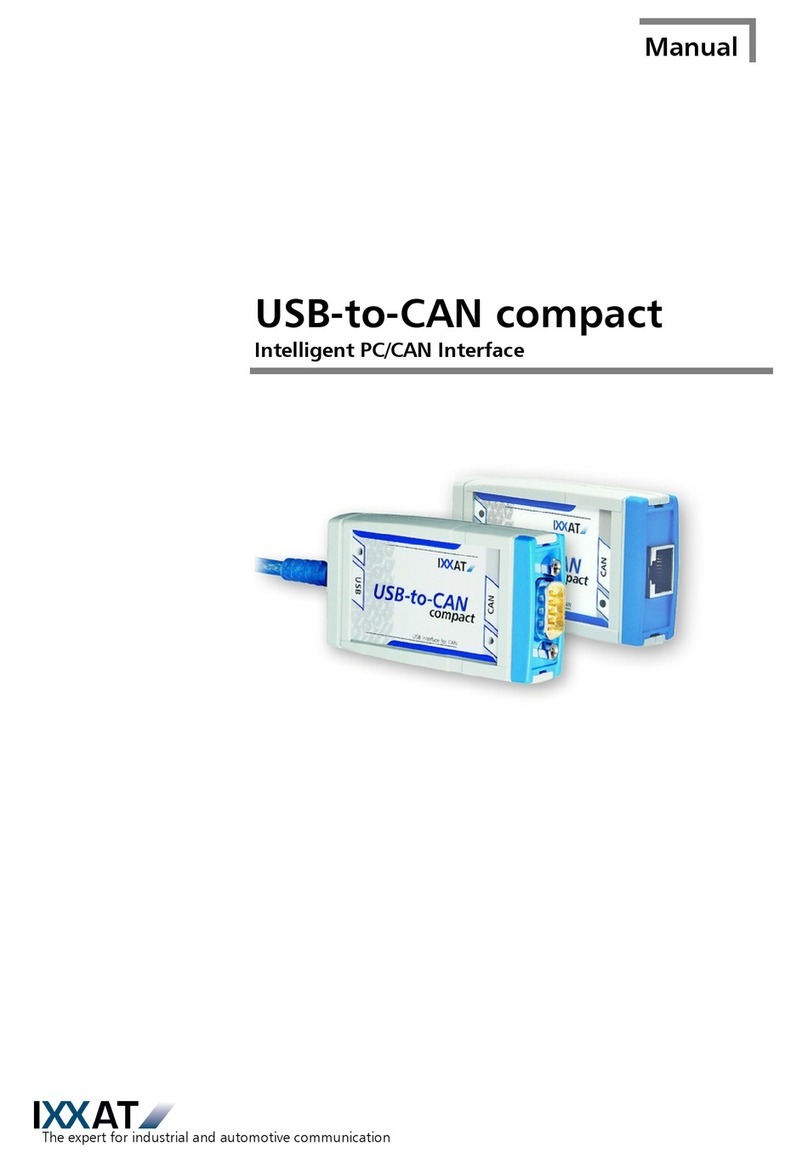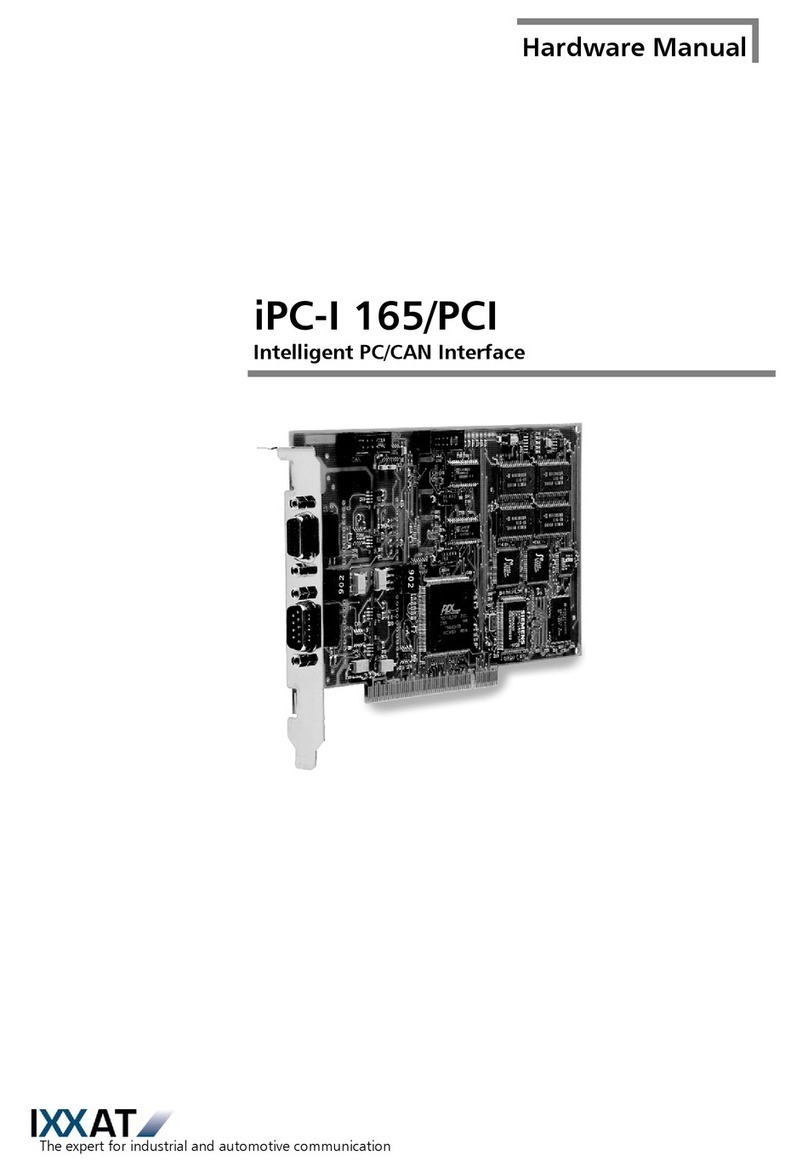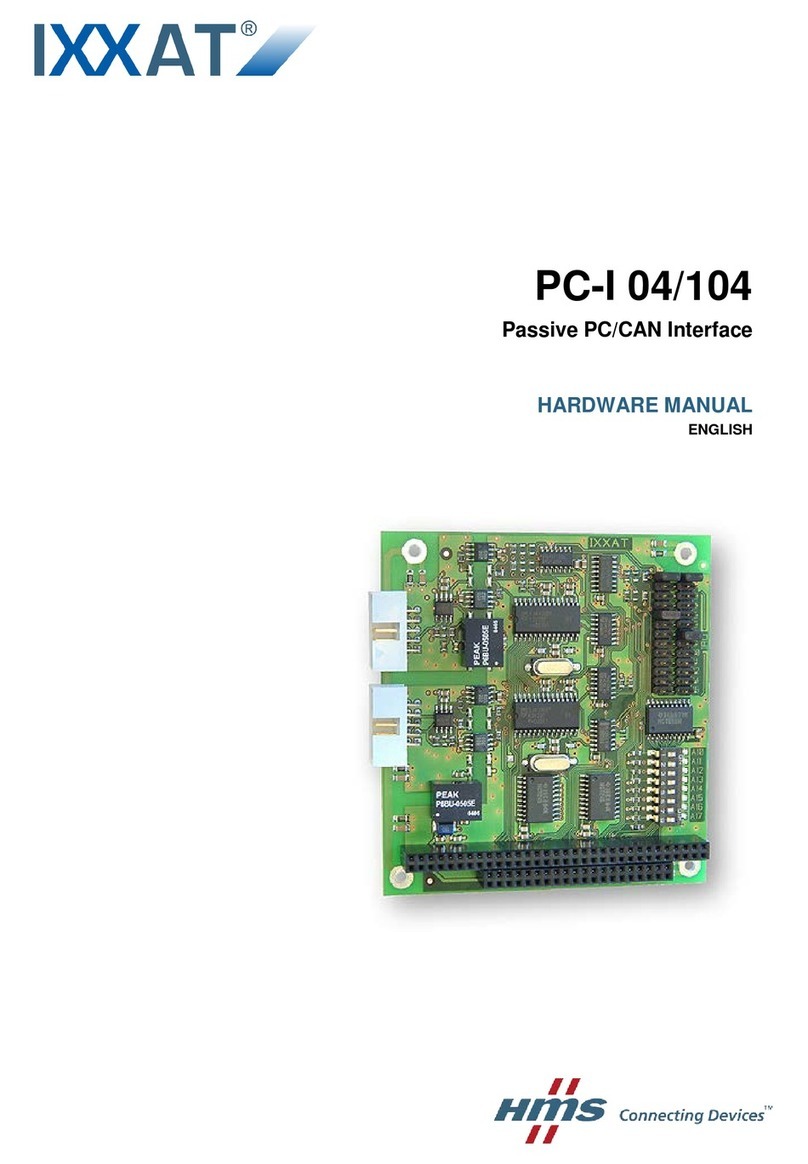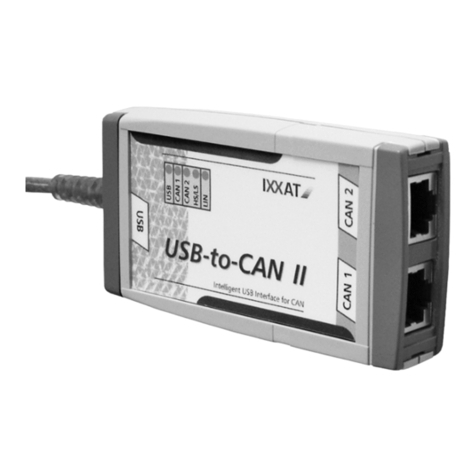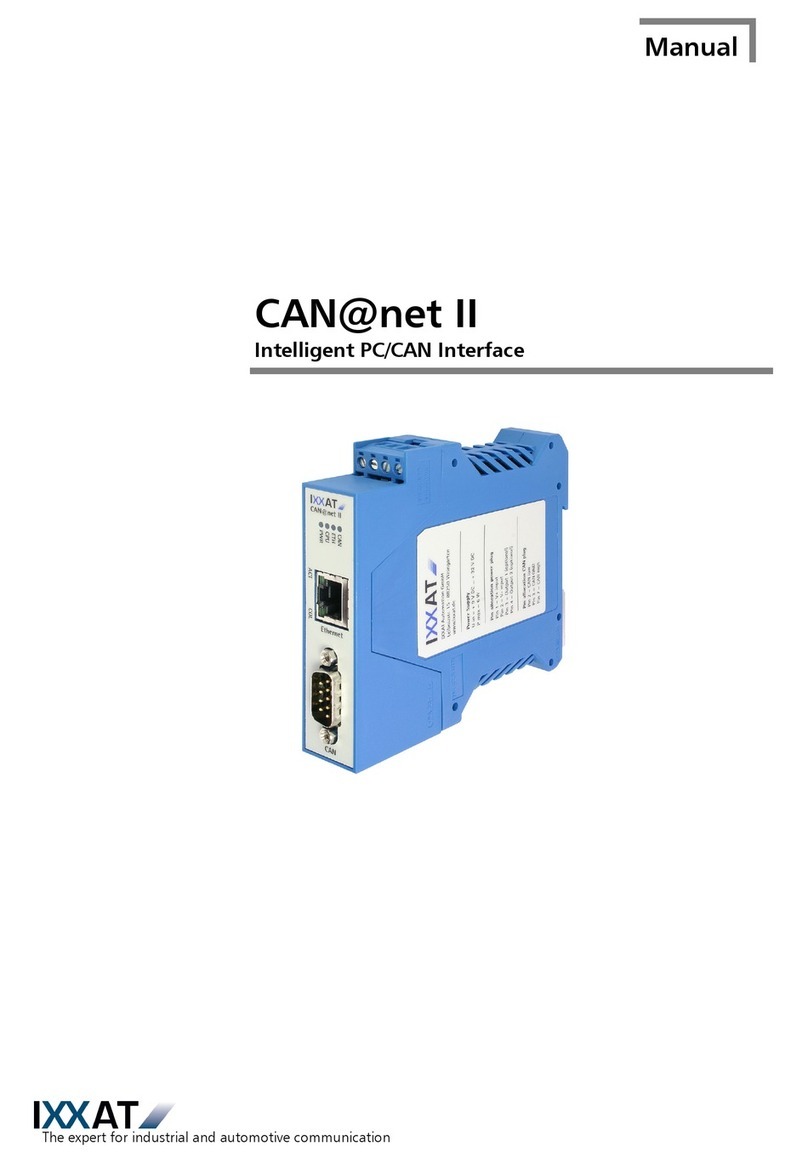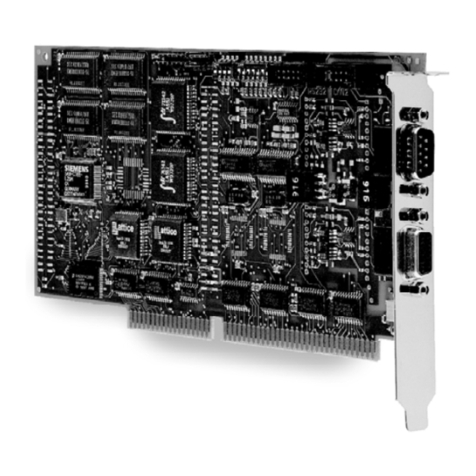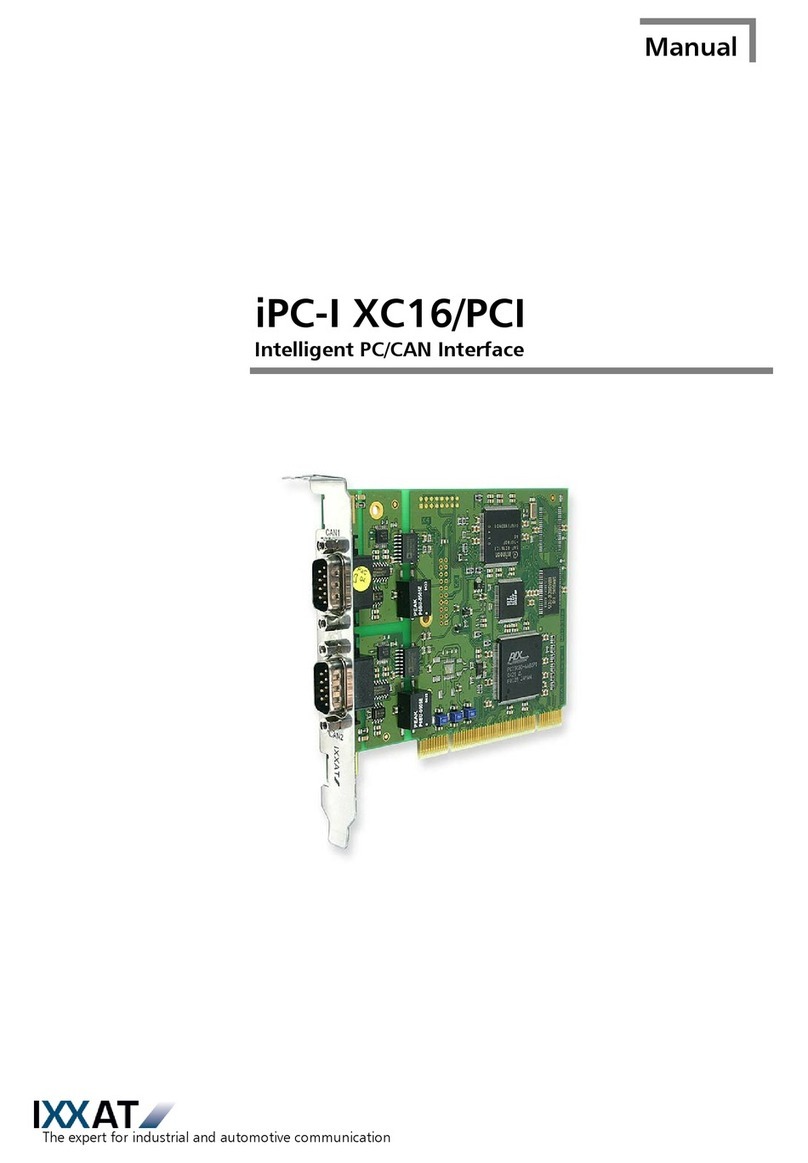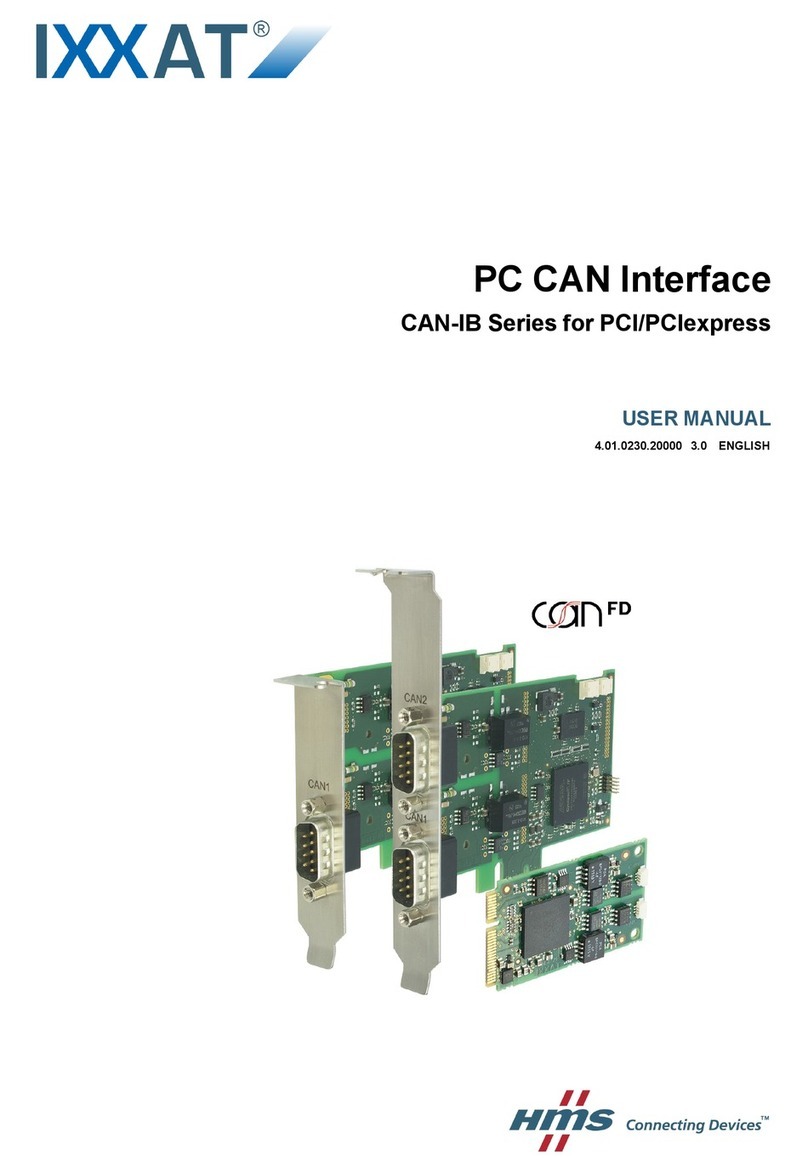
Copyright IXXAT Automation GmbH FlexRay CCM Manual, Version 2.4
Contents
3
1Introduction ..............................................................................5
1.1 Overview .............................................................................5
1.2 Features ..............................................................................5
1.3 Block diagram .....................................................................6
1.4 Support...............................................................................7
1.5 Returning hardware............................................................8
2Installation.................................................................................8
2.1 Hardware installation .........................................................8
2.2 Software installation ..........................................................8
3Connections...............................................................................9
3.1 Pin assignment .................................................................10
3.1.1 FlexRay connector (FLX A & FLX B) ........................................... 11
3.1.2 FlexRay CCM CAN connector (CAN1 & CAN2) .......................... 12
3.1.3 FRC-EP150 CAN connector (CAN1/3 & CAN2/4)....................... 12
3.1.4 Power connector (6 - 50 V DC) ................................................ 13
3.1.5 Ethernet connector (ETHERNET)............................................... 14
3.1.6 Trigger/Digital-Out connector (TRIG-OUT)................................ 15
3.1.7 Trigger-In connector (TRIG-IN) ................................................. 15
3.2 Shielding...........................................................................16
3.3 Trigger/Digital output .......................................................17
3.4 Trigger input .....................................................................20
4Displays ...................................................................................21
5Firmware updates....................................................................22
Appendix ........................................................................................23
Technical specifications ...........................................................23
Ordering codes ........................................................................24
Accessories ..............................................................................25
Information on disposal of waste equipment.........................30
Information on EMC ................................................................30
Declaration of conformity .......................................................31
FCC Compliance.......................................................................32
